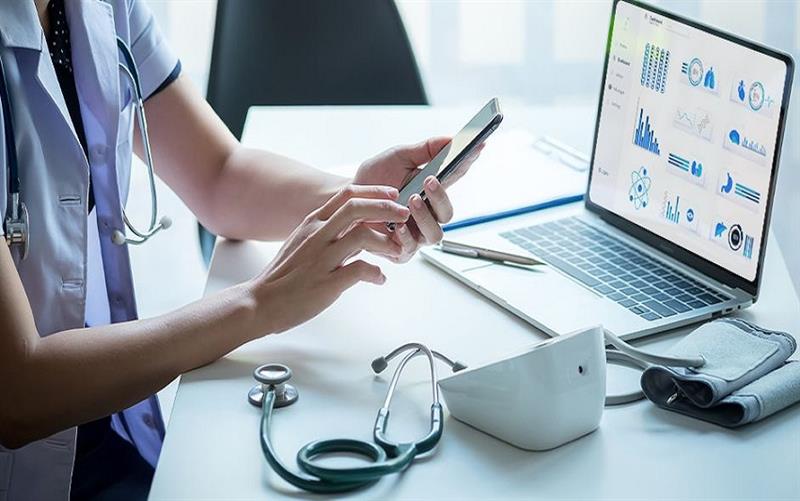
Integrating cutting-edge healthcare software is no longer just an option but a necessity for healthcare providers looking to enhance patient care. By streamlining administrative tasks, empowering patients, improving clinical decision-making, enabling remote care, leveraging data insights, ensuring compliance, and embracing continuous innovation, healthcare organizations can achieve better outcomes, reduce costs, and most importantly, improve the overall patient experience.
In today's rapidly evolving healthcare landscape, the integration of cutting-edge software solutions has become paramount in enhancing patient care. These innovative technologies not only streamline administrative tasks but also significantly improve clinical outcomes and patient satisfaction. Here’s how healthcare software is revolutionizing patient care:
1. Streamlined Administrative Tasks
Healthcare software automates mundane administrative tasks such as appointment scheduling, billing, and patient record management. This automation reduces errors, enhances efficiency, and allows healthcare providers to focus more on patient care.
2. Improved Patient Engagement
Modern healthcare software includes patient portals and mobile apps that empower patients to actively participate in their own care. Features like secure messaging, access to medical records, and appointment reminders foster better communication between patients and providers, leading to improved treatment adherence and patient satisfaction.
3. Enhanced Clinical Decision-Making
Advanced software solutions integrate clinical decision support systems (CDSS) that provide evidence-based guidelines and alerts to healthcare providers at the point of care. These tools help clinicians make informed decisions, avoid errors, and improve the accuracy of diagnoses and treatment plans.
4. Remote Monitoring and Telehealth
Telehealth platforms and remote monitoring tools have become indispensable, especially in the wake of global health crises. These technologies enable healthcare professionals to monitor patients remotely, deliver virtual consultations, and manage chronic conditions more effectively, thereby reducing hospital admissions and improving overall patient outcomes.
5. Data-Driven Insights
Healthcare software leverages big data analytics to derive meaningful insights from vast amounts of patient information. These insights facilitate predictive analytics, personalized medicine, and population health management strategies, ultimately leading to more proactive and efficient healthcare delivery.
6. Compliance and Security
With stringent regulations like HIPAA (Health Insurance Portability and Accountability Act) in place, healthcare software ensures patient data confidentiality and compliance with regulatory standards. Robust security measures such as encryption and access controls safeguard sensitive information from breaches and cyber threats.
7. Interoperability and Seamless Integration:
Modern healthcare software emphasizes interoperability, allowing different systems and devices to seamlessly exchange and use data. This integration improves care coordination among healthcare providers, reduces duplicated efforts, and enhances continuity of care for patients across different specialties and healthcare settings.
8. Patient Risk Assessment and Predictive Analytics:
Healthcare software employs predictive analytics to assess patient risk factors and identify individuals who may require proactive interventions. By analyzing historical data and patient trends, providers can intervene earlier, prevent complications, and optimize treatment plans based on personalized insights.
9. Personalized Medicine and Treatment Plans:
Advanced software supports personalized medicine by integrating genetic data, patient preferences, and clinical guidelines. This approach tailors treatment plans to individual patient needs, optimizing therapeutic outcomes and minimizing adverse effects.
10. Patient Feedback and Satisfaction Monitoring:
Software platforms include tools for collecting patient feedback and monitoring satisfaction levels in real-time. This feedback loop enables healthcare providers to promptly address concerns, improve service delivery, and enhance overall patient experience.
11. Education and Training Tools:
Healthcare software offers educational resources and training modules for both patients and healthcare professionals. Interactive learning platforms, virtual simulations, and access to updated medical literature empower stakeholders with knowledge and skills essential for better health outcomes and continuous professional development.
12. Quality Improvement Initiatives:
Utilizing data analytics and performance metrics, healthcare software supports quality improvement initiatives. Continuous monitoring of clinical outcomes, adherence to best practices, and benchmarking against industry standards help healthcare organizations identify areas for improvement and implement evidence-based interventions.
13. Population Health Management:
Software solutions aid in population health management by aggregating and analyzing data across large patient populations. This population-level perspective allows healthcare providers to identify trends, allocate resources efficiently, and implement preventive strategies to improve the health of communities served.
14. Enhanced Communication and Collaboration:
Integrated communication tools within healthcare software facilitate seamless collaboration among multidisciplinary care teams. Secure messaging, video conferencing, and shared care plans enable real-time communication and decision-making, ultimately benefiting patient care coordination and outcomes.
15. Comprehensive Electronic Health Records (EHR):
Robust EHR systems centralize patient information, including medical history, diagnostic test results, medications, and allergies. Accessible at point-of-care, these records improve accuracy, reduce medical errors, and ensure continuity of care across different healthcare settings